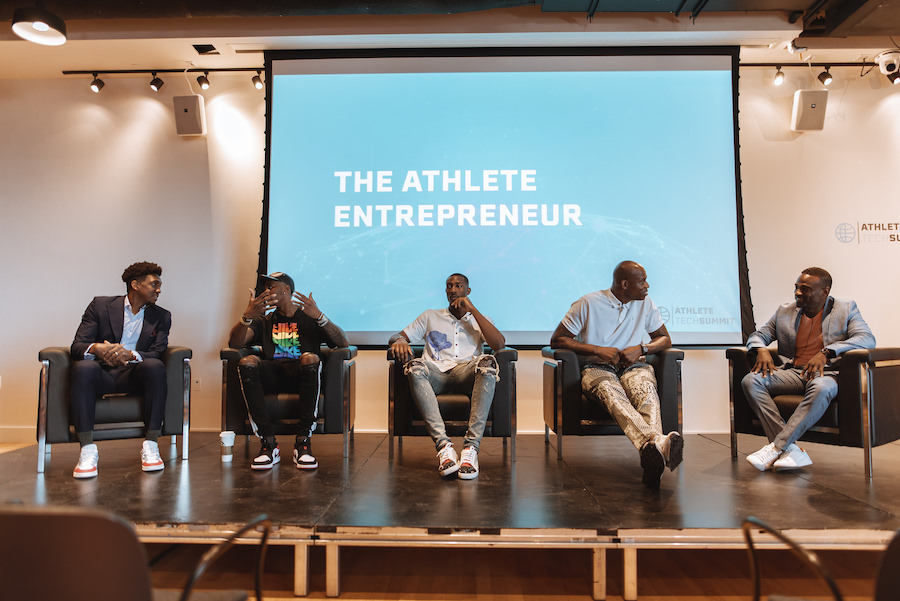How Side Hustles Can Lead To Your Most Innovative Ideas
Andrew Safranko is the National Entrepreneurship, Startup and Incubator Lead at IBM Canada. He’s also an Entrepreneur In Residence at YSpace, an innovation hub where Kimp is one of the startups.
We’ve had the opportunity to pick Andrew’s brain on a number of things over the past year, including how to develop and validate new ideas while running a business.
Andrew’s an expert when it comes to this. His insights come from years of juggling multiple roles and exploring entrepreneurship while working full-time at IBM.
“I lead our startup mission for Canada – this includes managing any work around startups and entrepreneurs and what collaboration with them looks like for IBM.”
Getting Into The Trenches
By working with startups that are in the spaces IBM is exploring (like banking, retail, connected worlds, etc.) Andrew’s team has established a huge growth hack. They can offer unique solutions to their clients by way of the startups, and they’ve also gained insights into what will or won’t work for IBM and other large businesses.
“Tech is small but big. Everyone knows this. From IBM to Amazon. Today you have to be a part of the small business space. Our customers ask to work with small businesses all the time because they’re more specialized and efficient.”
This effort is uniquely Canadian says Andrew because of the great relationship IBM has with stakeholders like all levels of government and academic institutions. The company has a large tech workforce across the country and investments in entrepreneurship and innovation by both IBM and Canada have always been strong. “We’ve actually gone to market together and built solutions out.”
A Side Hustle Called The Athlete Tech Summit
Andrew is currently working on 2 different apps and is part of the team that launched the Athlete Tech Summit in Toronto this summer. The event brought together Startups, Venture Capitalists, Influencers, and Professional Athletes to learn about opportunities to invest in Toronto’s booming tech scene through fireside chats.
It might seem surprising that Andrew managed to get involved in this with a demanding full-time role. But he did it the same way he’s approached many of his projects – by recognizing larger trends and opportunities from a single incident.
A huge basketball fan, he was intrigued when he learned that Steph Curry was investing $18 Million in the Toronto based tech startup SnapTravel. And he wasn’t the only one. There were shockwaves across the board that such a huge investment was being made beyond Silicon Valley and New York. Andrew loved the fact that two worlds he is so passionate about were coming together and describes “literally DM’ing Steph Curry and his investment manager”.
Similar to Steph Curry, Kevin Durant and Lebron James both have investment teams that help with identifying new opportunities. And after trying to reach out to all of them Andrew was left thinking about other ways to connect Athlete entrepreneurs with startups.
Going Beyond Silicon Valley
To Andrew the need was clear. There are a lot of players interested in making investments but lacking the structure or guidance to do so. And the guidance that they do have often comes from Managers with expertise in investing in real estate or clothing. It’s not just a coincidence that so many professional athletes have clothing lines or invest in properties.
Around this time Randy Osei, the CEO and Founder of Rozaay Management, was also thinking about the intersections of tech and athletes (Rozaay Management provides marketing and talent management for NBA players). Especially once news of the Steph Curry and SnapTravel deal went live. The fact that an NBA player in California had invested in a startup from Toronto inspired Randy to connect more professional athletes to local businesses.
He then looped in Darryl Julott, the Senior Manager at Digital Main Street which helps small businesses with digital transformation. And Darryl brought Andrew into the fold.
While Andrew is used to having entrepreneurs pitch business plans or throw ideas at him, this was unique. He was sitting around the table with two guys that he shared a vision with and they collectively had the capabilities to act on it. With little sponsorship, they tapped into their own networks and got the event off the ground.
“I really wanted to be a part of this athlete and tech world. We all believe in something and then the universe does its thing. Whatever you project out, you draw toward you and I think that’s what happened here.”
Having capitalized on the presence of athletes in the city for Drake’s OVO Fest and Toronto’s Caribana weekend, the Athlete Tech Summit team is now looking at how they can carry forward momentum to their 2020 Summit.
Building The Groundwork For You Side Hustles
For anyone working a full-time job, with dreams of launching a business on the side, you know it can seem impossible. But your limitations can be your assets if you shift your perspective to see them that way.
“What I’ve learned is that when you’ve got structure it’s a lot easier. I have a family. There’s time in the day when I just can’t be reached. And that makes time is precious. I get a lot more done. knowing that I don’t have a lot of time in the day.”
From his early days at IBM Andrew had the opportunity to work with Execs in the US and later on became a Chief Of Staff for an Exec in Canada. He saw firsthand how frantic and apprehensive they could be. And how they often seemed to carry themselves in these ways because that’s what everyone seemed to expect; that if you had a certain title, you had to behave in a certain way. He wanted to do things differently.
“Don’t be held back by the way your job is defined. If you really want to do something, figure out how to make it happen and do it.”
Having projects and goals on the side, outside of the scope of his work gave Andrew perspective beyond his job. Something he realized was of value as he met others who encouraged him to think bigger. Reimagining how things could be done not only helped him excel at IBM, but to recognize new opportunities too.
Finding The Right Mentors
Andrew says he always struggles to find the right mentors. In earlier stages of his career he was surrounded by those at IBM who had extensive knowledge of the company. But he wanted a broader perspective on the world.
He’s found that by establishing a network full of individuals who have a variety of strengths. This has made it easier for him to be able to reach out to those with perspectives he might lack.
Mentorship has also found a place in his life in an unexpected way. He’s often the one people reach out to for advice. And that’s given him the opportunity to learn as he helps entrepreneurs identify and navigate opportunities and obstacles.
To entrepreneurs and business owners looking to build strong networks, and find mentors, Andrew recommends the following:
- Be transparent because facades always catch up to you.
- Intentionally build relationships in all of the spaces you want to excel in.
- Don’t rule out mentors just because they don’t have the exact same path as you.
As an entrepreneur, your path will be unique in many ways and you won’t always find someone who’s done exactly what you want to do. But that doesn’t mean they don’t have a skill set you can leverage.
The Dos And Don’ts For Startups
“Oh man how do I put this” Andrew laughed when we asked him about the blind spots that entrepreneurs tend to have. A lot of entrepreneurs focus on having the right credentials. But it’s far more important that they’re able to tell their story and describe what they’re solving in a compelling way.
“The best storytellers get attention and get remembered. The best meetings always involve an idea being explained in a couple of minutes. I want to be sure that you know what you’re saying and understand what you’re doing.”
A lot of companies are formed by engineers and developers, or more broadly those who don’t know how to sell. So Andrew recommends learning how to pitch and sell. Get comfortable with telling your story because you’re going to have to tell it again and again, to different audiences. And testing out different approaches and getting feedback will help you get to a point where your message is crisp and clear.
Prioritize Your Customers’ Feedback
When it comes to the different audiences you interact with, Andrew says that prioritizing customers is key. Regardless of the stage your business is at, you should always be talking to your current and potential customers. That’s a message that gets lost in the shuffle. Especially as entrepreneurs focus on funding or growing their businesses without validating their ideas first.
“You can’t just think that coming up with a solution to a problem means that it’s going to be a success. Build small and ensure that your service or product has got legs and prove this out in the sales.”
There’s a lot of things that can make a business owner feel that they are being productive when really they’re just making themselves busy. Things like constantly updating their website without any feedback or insights into how their customers are interacting with it. Or talking to investors without having spoken to customers and having actual sales.
If you’re building hardware you need people to build out a product. Otherwise, chances are you can actually run your business from your home or from a small space with low overhead. This will free you up to make strategic investments in things that will help you grow your business.
The Bottom Line
“If I really want to do something, I just find a way to do it. Whether that’s teaching English to people in China online or running a marathon. The limits on what you can do are really up to you. And once you start approaching everything you do that way, with that kind of belief in what’s possible, that kind of mentality can’t be held back.”

